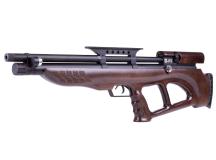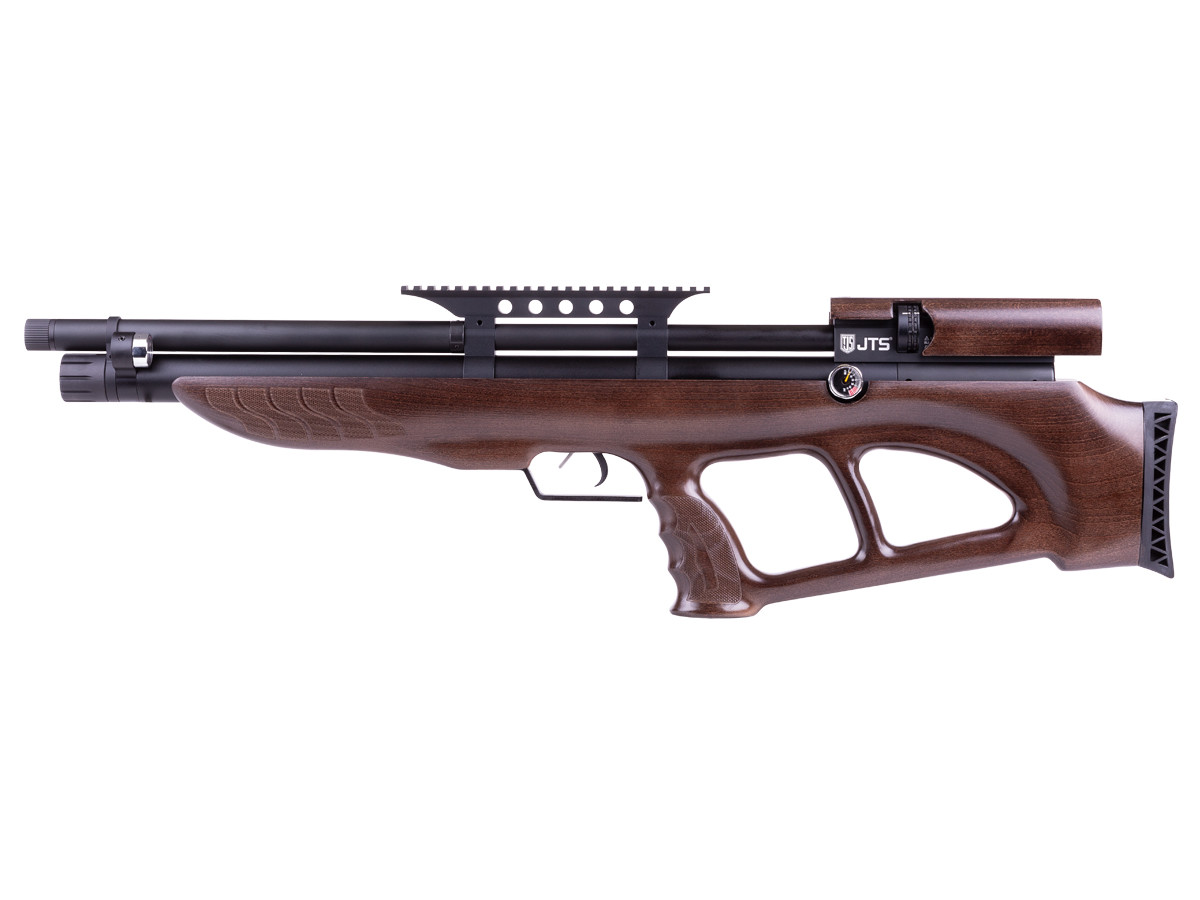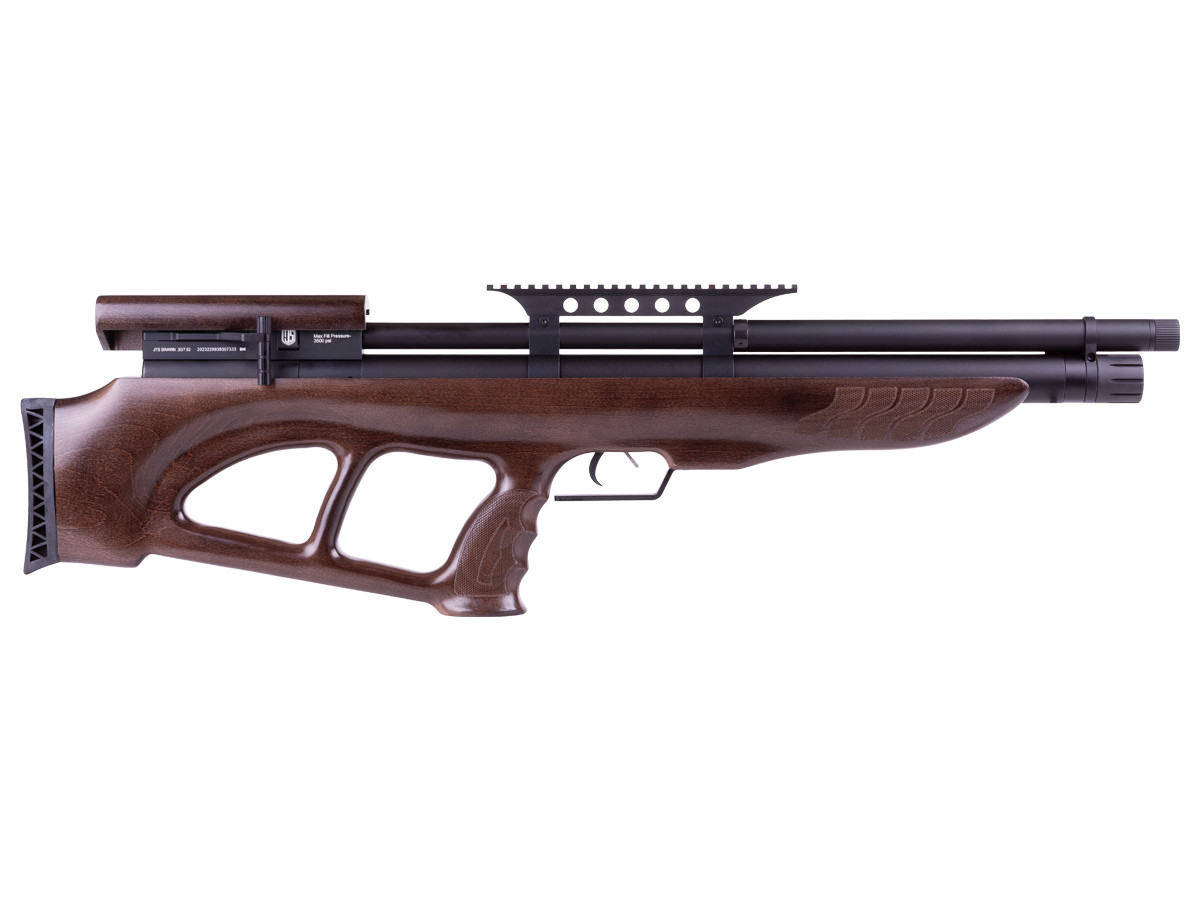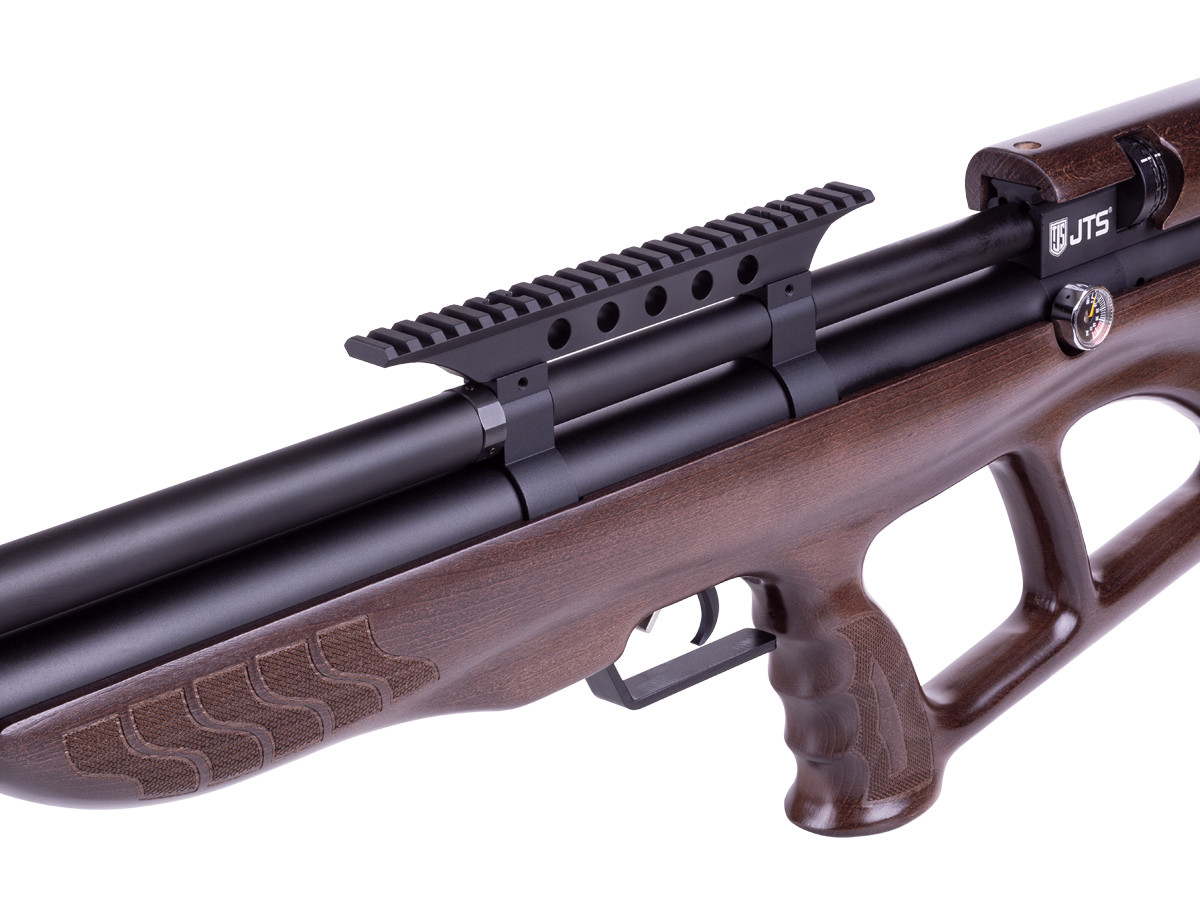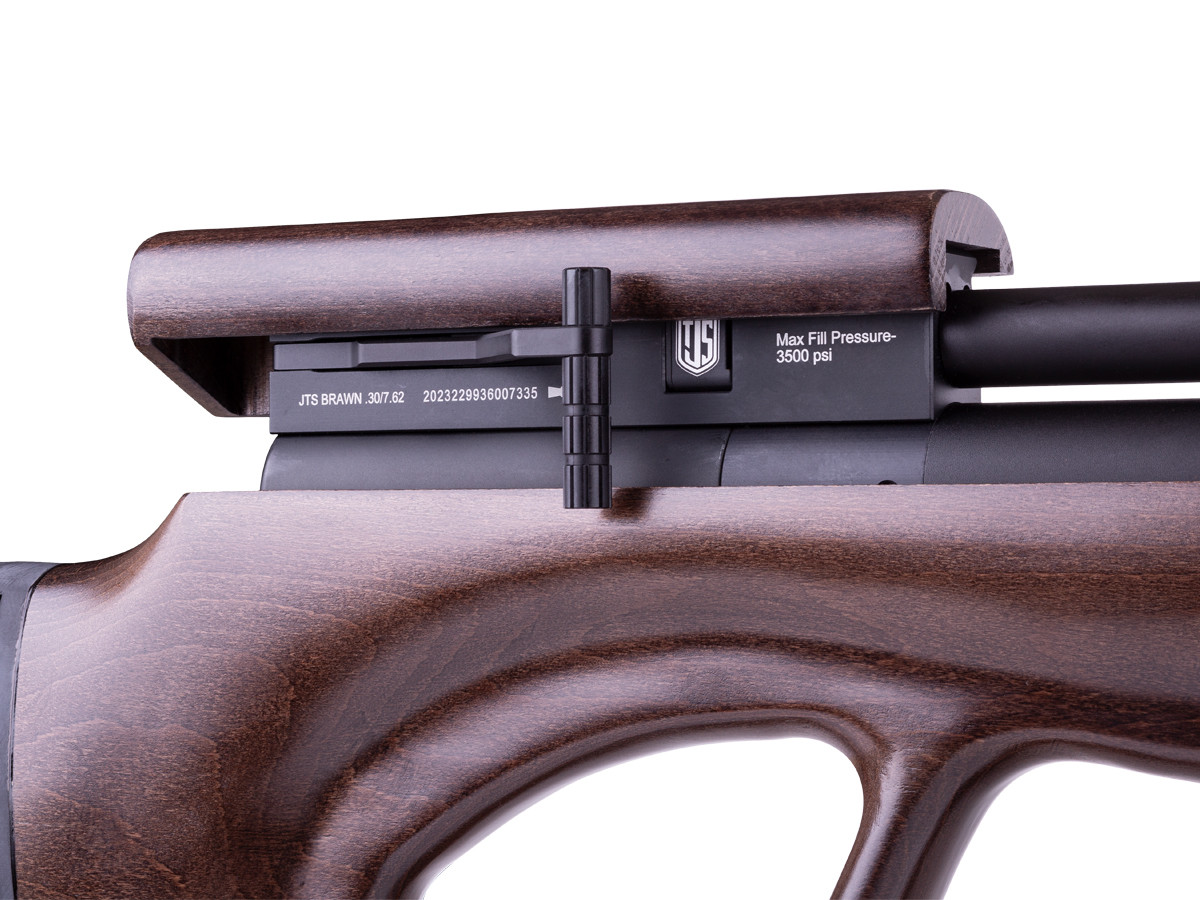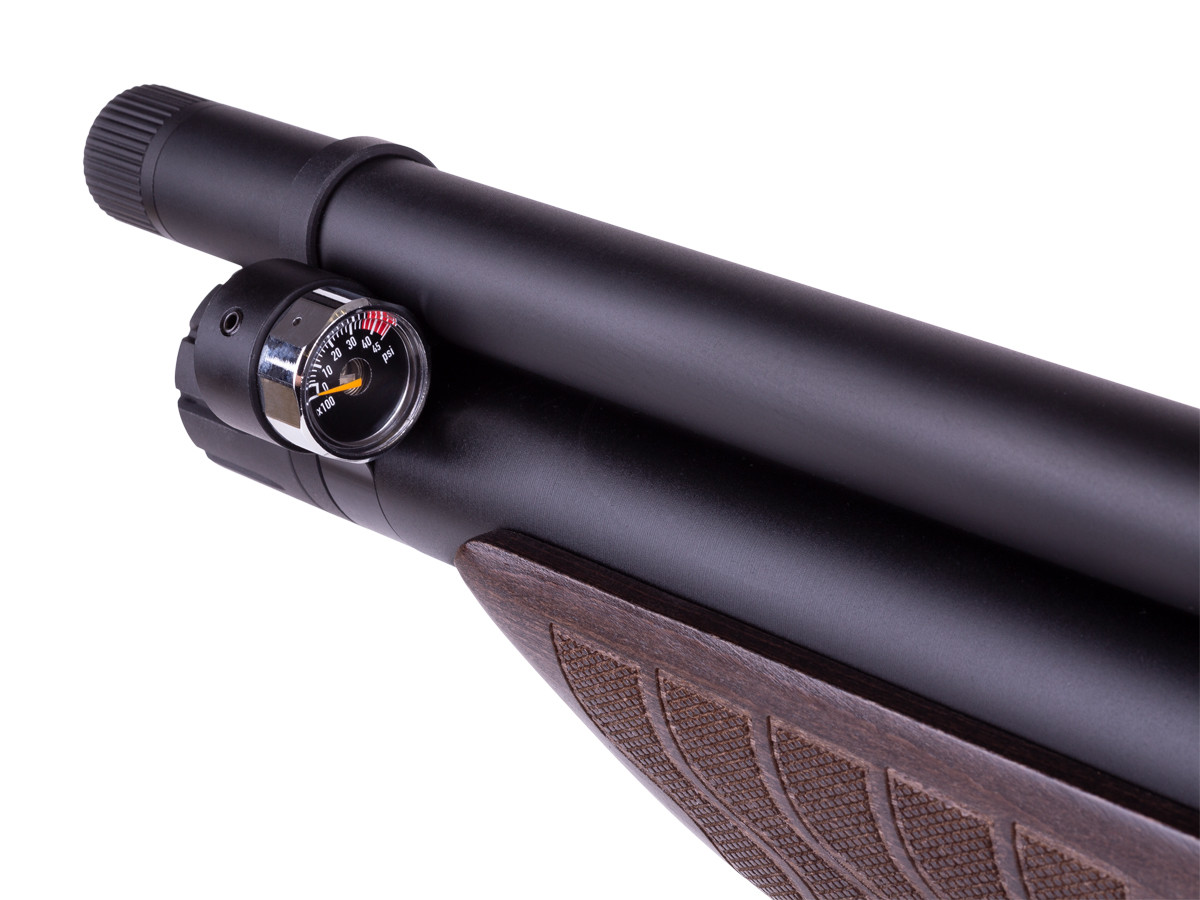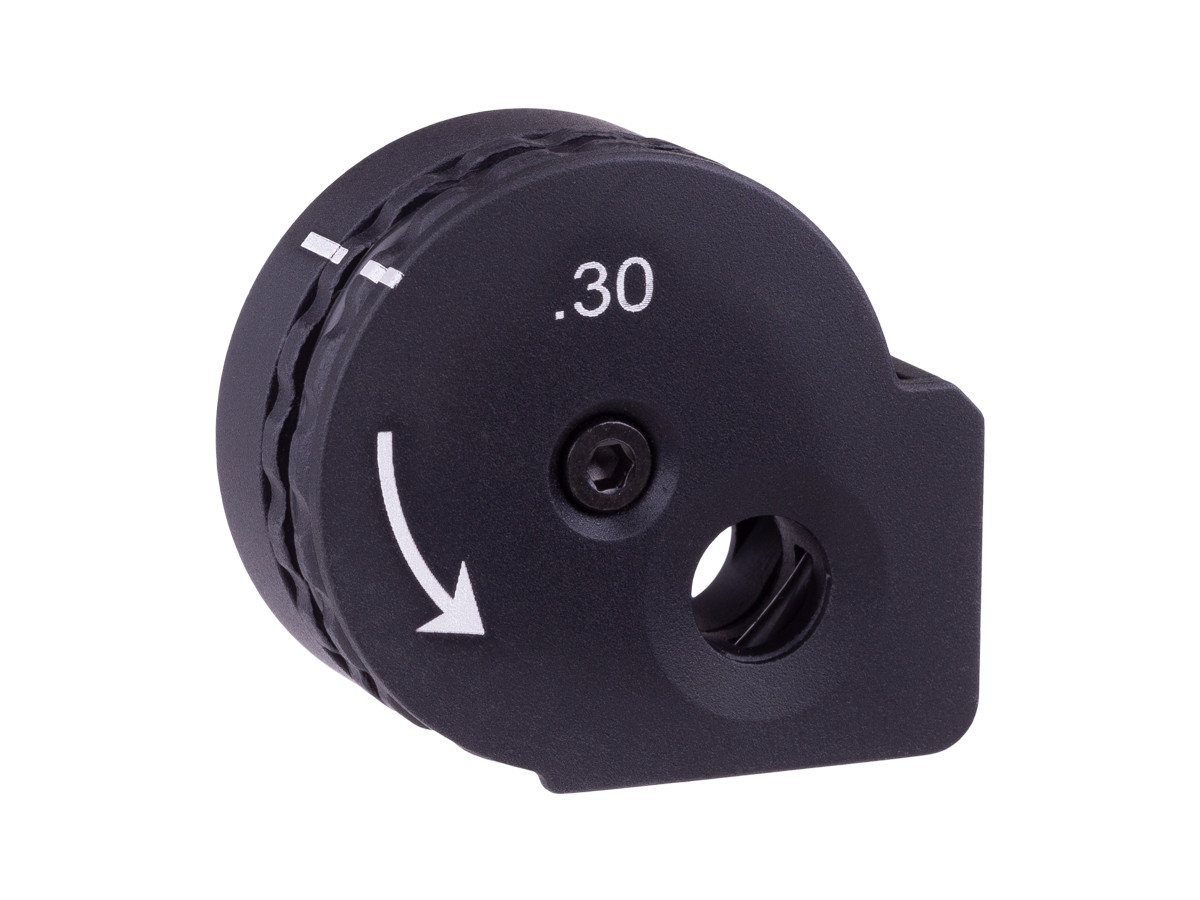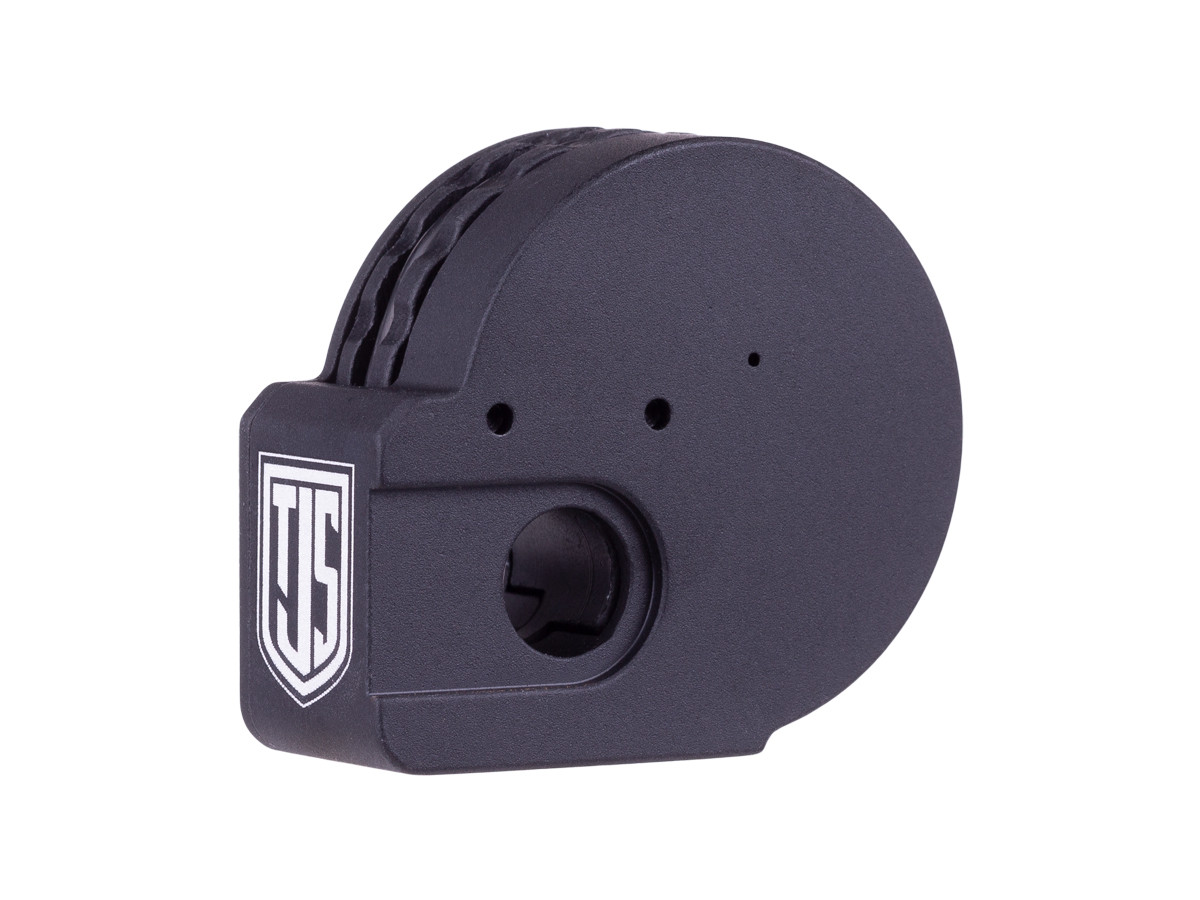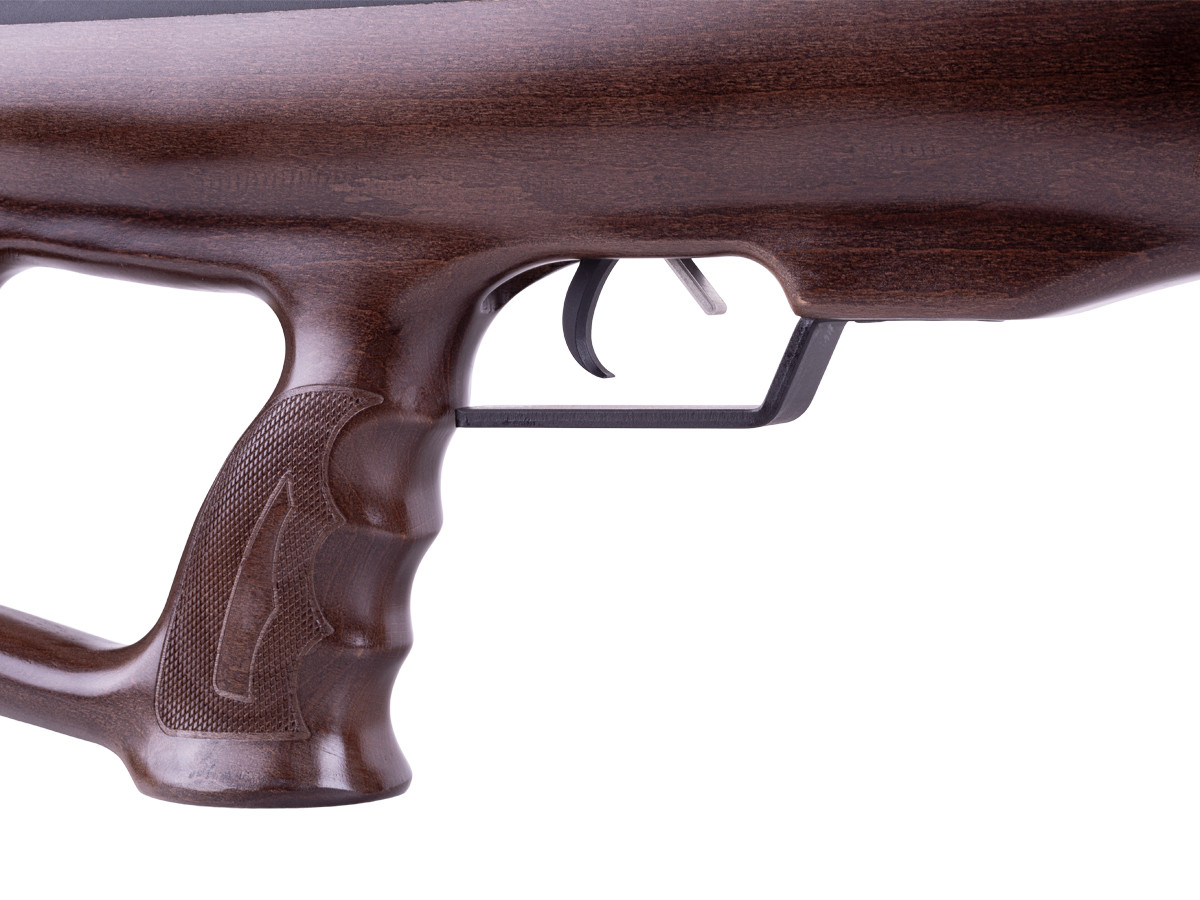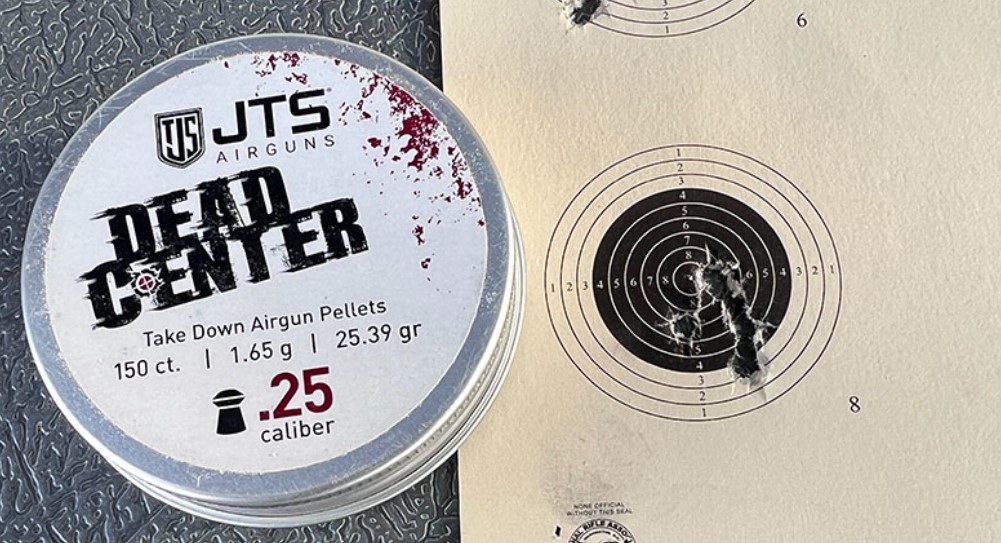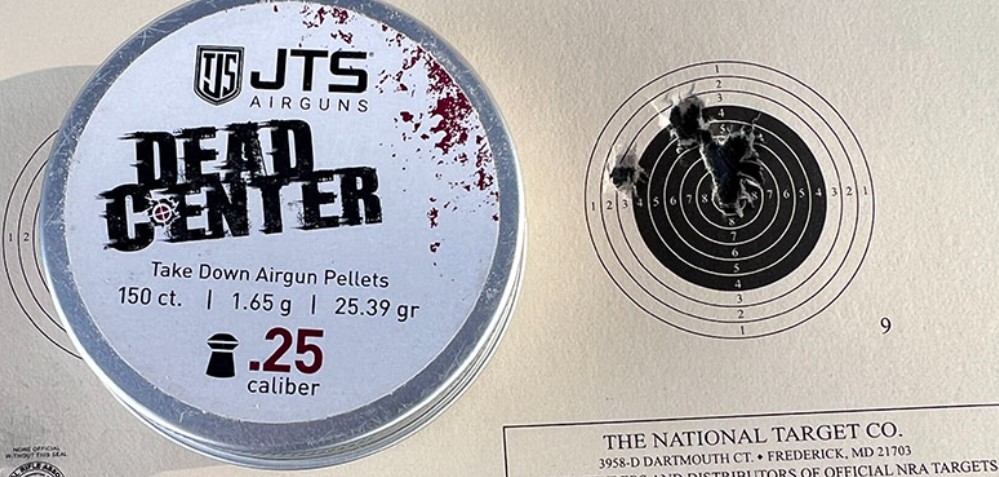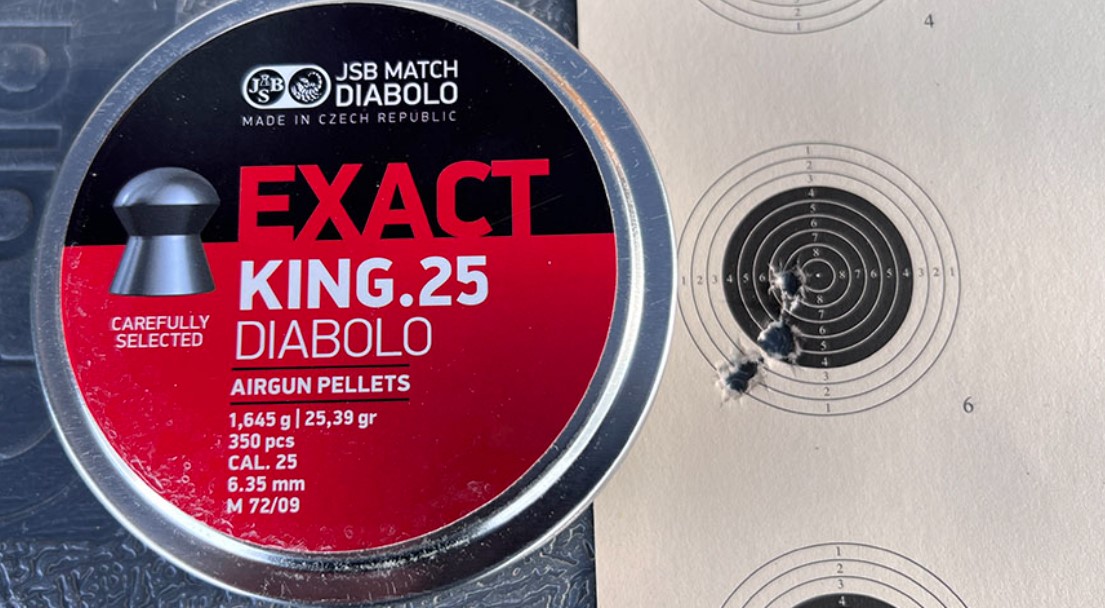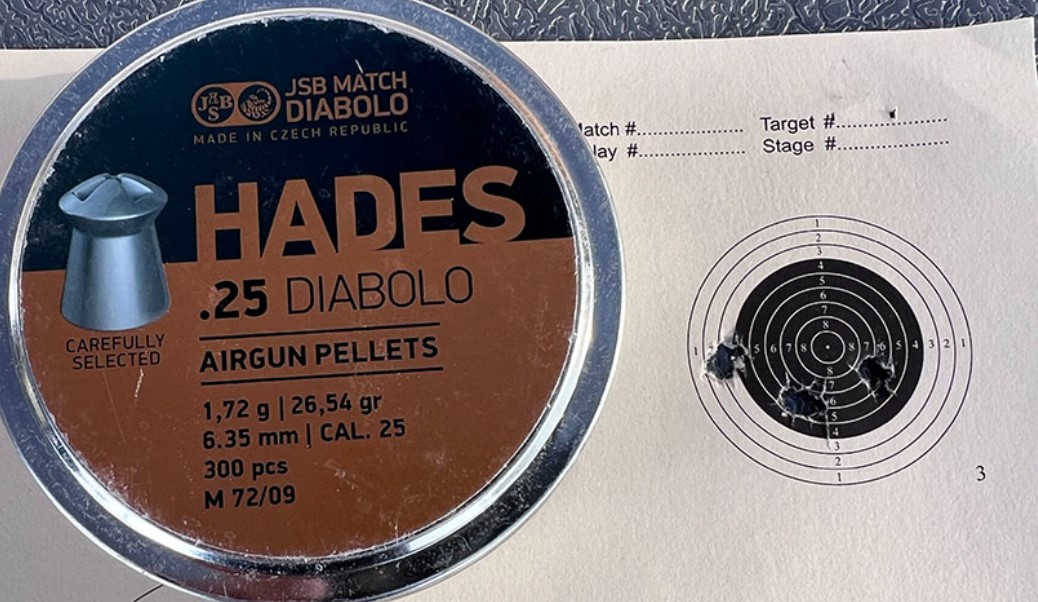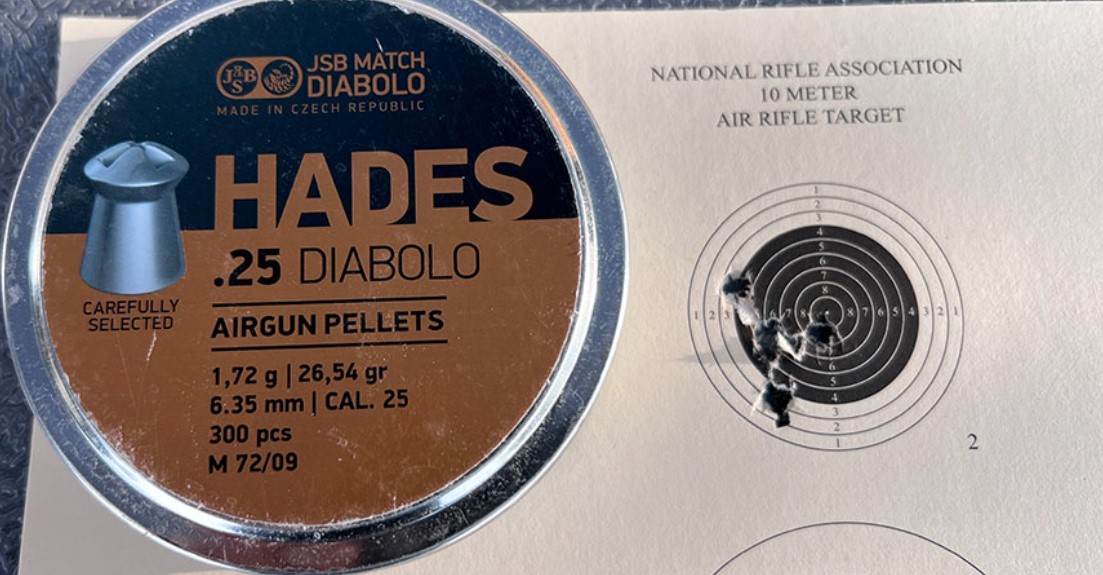Definitive Guide to JTS Brawn
The JTS Brawn air rifle is available in .177, .22, .25, and .30 calibers. Our test sample is chambered in .25 caliber and delivers an average of about 44 foot-pounds across several pellets but we'll get to that later in this guide. Let's get some of the "boring" stuff out of the way first.
At its core, the Brawn is an Airacuda Max that's been modified and dropped into a wood bullpup stock. The implementation leaves a few things on the table, and we suspect that they will be addressed in the next iteration of the line. The cocking handle is in the same location as the Airacuda Max, placing it right at the rear of the gun. Shooters may find it awkward to cock at first, but you do get used to it pretty quickly. This is a common practice for a company's "first" bullpup. It's not ideal, but it makes sense rather than retooling an entire action while testing the waters with a new product.
The second common oversight is the height of the scope rail in correlation to the bore and cheekpiece. Bullpups require a scope to be mounted much higher than a regular rifle which is due to the position of the barrel in relation to the cheekpiece and buttstock. Ideally, you want the barrel above the cheek weld so that you can keep the scope close to the bore. But if you take a look at AR-style airguns and bullpups, the bore is either in line with the buttstock or, in the case of the Brawn, below the cheekpiece.
Additionally, JTS used a wooden cover over the weaver rail at the rear of the receiver. This wooden cover looks great and is comfortable against your face, but it adds height to the cheekpiece and requires the scope to be mounted higher than most scope rings can accommodate. All of this leaves us with the option to shoot in an uncomfortable position or use a riser between the rail and the scope rings. However, because this is typical with most bullpups, there are plenty of riser rails, like the UTG .5" rail, that will solve the scope height issue.
As far as things that are "less than optimal" that's about it. Now, let's take a look at some of the other specs and features. The Brawn comes in at a hefty 9.3 pounds. That's a lot of weight for a compact airgun. Fortunately, the balance is decent, and the bullpup format makes it feel lighter than it is when shouldered.
The overall length is 33.00 inches, and the rifled steel barrel is 17.2 inches. It features an integrated moderator and a 1/2 UNF end cap for additional accessories. The air cylinder takes a maximum of 3500 PSI. The Brawn is regulated and turns that 3500 PSI into 30 consistent shots, per the stats from JTS.
The wooden stock is nice. It looks great and is well-proportioned and balanced. However, it lacks swivel studs, which would have been really handy for hunters who wanted to add a sling. There is plenty of wood for those who want to tap, drill, and install their studs.
Setup and Operation
Before you get out to the bench and start pulling the trigger, you'll need to get your new airgun set and ready to go. The Brawn does not come with open sights or an optic, so you'll want to get that sorted out first. Additionally, you'll want to make sure you get extra high rings or a riser to help get the scope in an optimal position. The Brawn is a decent 50-yard airgun with the ability to stretch things out to 75 and 100 yards in the right conditions, so looking at a decent 4-16x50 30mm scope would be our suggestion.
The JTS Brawn is a PCP bullpup that requires high-pressure air to operate. Shooters can use a hand pump, personal compressor, carbon fiber tank, or any other suitable source to get it ready to shoot. There is a quick disconnect at the front of the cylinder. Just behind the fill port, you'll find the rear-facing pressure gauge that rotates to either side of the airgun, which is an awesome feature. It's easy to see your current pressure right from the shooting position. There's a second gauge on the left side of the Brawn that provides the reg pressure. Comparing the fill pressure to the reg pressure provides immediate feedback so shooters know they are still on the reg.
The Brawn PCP pellet rifle comes with two all-metal magazines. The .177 holds 12 pellets, the .22 and .25 magazines hold 10 pellets, and the .30 cal holds 7 pellets. The mags are deep enough to accommodate some slugs, but the Brawn is designed for pellets. We'd recommend sticking with pellets for optimal results.
Once you've filled your gun and loaded your mags, you'll need to open the cocking lever and install the magazine in the breech. Closing the cocking lever seats the pellet into the breech, and you are ready to fire. There's a manual safety in the trigger guard. To fire, release the safety, acquire your target, and gently squeeze the trigger. The adjustable trigger is connected to the action via a linkage, which works well and provides decent feedback and a sub-2-pound pull.
Performance and Accuracy
We are pleased to say that the Brawn delivers right on target, with 30 shots on the reg and decent consistency. The chrony results with the JTS Dead Center pellets showed an extreme spread of 19 and a standard deviation of only 4. The average velocity was 873, delivering 42.98 foot-pounds of energy at the muzzle.
We shot multiple groups with 3 different pellets: the 25.39 JTS Dead Centers, the 25.39 JSB Kings, and the 26.54 JSB Hades. The consistency with each pellet was single digit, which speaks to the quality of the reg and the balance of the valve and hammer spring right from the factory.
We often find group-to-group inconsistency, but the Brawn delivered consistent 5-shot groups regardless of what pellet we were testing. Here are two groups for each pellet shot in mild wind from a bench at 50 yards.
- High 881
- Low 875
- Average 878.2
- Extreme Spread 6
- Standard Deviation 2.0 - two 5-shot groups from 50 yards.
- High 882
- Low 876
- Average 878.7
- Extreme Spread 6
- Standard Deviation 2.2 - two 5-shot groups from 50 yards.
- High 865
- Low 857
- Average 861.6
- Extreme Spread 8, Standard Deviation 2.2 - two 5-shot groups from 50 yards.
Summing Up
We haven't even talked about price. The JTS Brawn bullpup pellet gun comes in at just under $500 at the time of this guide. And it also comes with an industry-leading 3-year warranty. It's a bit heavy and has some "first bullpup" characteristics that are common and minor to overcome. But it delivers where it's important. The Brawn delivers consistent, accurate shots at 50 yards without even breaking a sweat. And shooting the Brawn is a lot of fun. It's an airgun that you'll have a hard time putting down. If this is JTS' first effort into the bullpup market, we can't wait to see what they do next.
If you are interested in the Brawn or other products from JTS, please reach out to us here at Airgun Depot. We are always ready to help.
